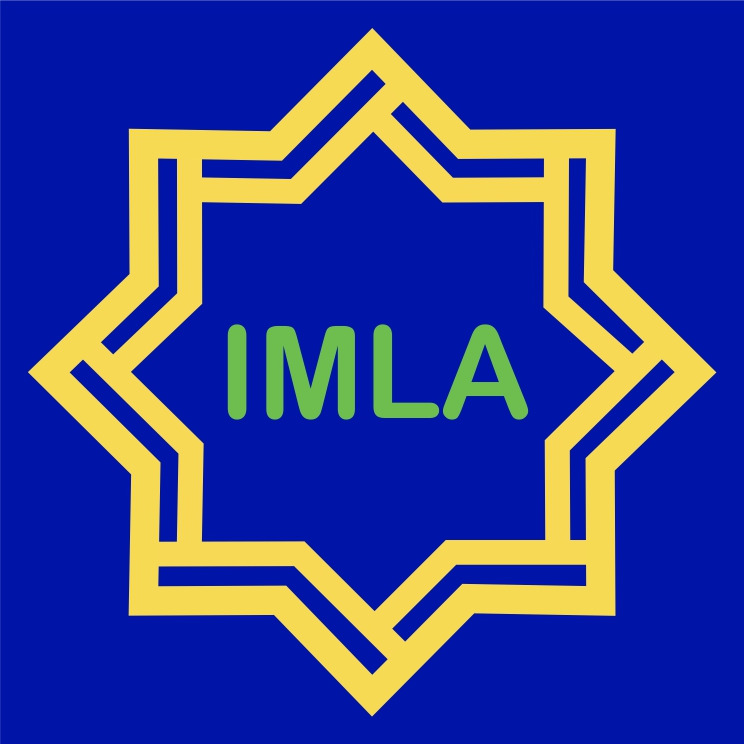Maharah al-Qira'ah Learning Model through Edmodo at Department of Arabic Language Education, Imam Bonjol State Islamic University, Padang
DOI:
https://doi.org/10.29240/jba.v5i2.2557Keywords:
Learning model, maharatul qira'ah, edmodoAbstract
This study aims to determine the validity of Maharatul Qira'ah learning model design by utilizing Edmodo e-learning application, and to describe the learning model and its impact on student participation. The rapid development of ICT is influencing the Arabic learning model at PBA UIN IB Padang which is still using the classical model, and the participation of students is still lacking. Here, the innovation of the classical learning model toward online-based learning needs to be done, such as by utilizing Edmodo e-learning application. This research used the ADDIE step model. The research subjects consisted of 32 students and 5 lecturers of PBA. This study used valid instruments. Based on the data analysis, the validity of the design of the teaching materials presented in the Edmodo e-learning has met the very valid criteria, with a score of 83.59. The e-learning model developed was a blended learning with complement functions in the form of synchronous and asynchronous communication. This e-learning had been able to increase student participation by 81,25%. This study recommends further researchers to use Edmodo e-learning application in teaching various language skills in a fully integrated online model.
Downloads
References
Al-Ghamdi, Mohammeed A. “Arabic Learners’ Preferences for Instagram English Lessons.†English Language Teaching 11, no. 8 (2018): 103. https://doi.org/10.5539/elt.v11n8p103.
Aljojo, Nahla, Asmaa Munshi, Wafa Almukadi, Azida Zainol, Ihdaa Alanaya, Hawazin Albalawi, Ghadeer Alharbi, et al. “The Design and Implementation of an Arabic Pronunciation Application for Early Childhood.†Journal of Technology and Science Education 9, no. 2 (2019): 136–52. https://doi.org/10.3926/jotse.486.
Basori. “Pemanfaatan Social Learning Network â€Edmodo†Dalam Membantu Perkuliahan Teori Bodi Otomotif Di Prodi PTM JPTK FKIP UNS.†JIPTEK 6, no. 2 (2013): 99.
Brahin, Noor Mohd Ariff, Haslinah Mohd Nasir, Aiman Zakwan Jidin, Mohd Faizal Zulkifli, and Tole Sutikno. “Development of Vocabulary Learning Application by Using Machine Learning Technique.†Bulletin of Electrical Engineering and Informatics 9, no. 1 (2020): 362–69. https://doi.org/10.11591/eei.v9i1.1616.
Chang, Chiu Lan, and Ming Fang. “E-Learning and Online Instructions of Higher Education during the 2019 Novel Coronavirus Diseases (COVID-19) Epidemic.†Journal of Physics: Conference Series 1574, no. 1 (2020): 0–5. https://doi.org/10.1088/1742-6596/1574/1/012166.
DoÄekal, VÃt, and Hana Tulinská. “The Impact of Technology on Education Theory.†Procedia - Social and Behavioral Sciences 174 (2015): 3765–71. https://doi.org/10.1016/j.sbspro.2015.01.1111.
Febriani, Suci Ramadhanti, and Anasruddin Anasruddin. “Technology for Four Skills Arabic in the Era Emergency of Covid-19 in Indonesia.†Ta’lim Al-’Arabiyyah: Jurnal Pendidikan Bahasa Arab & Kebahasaaraban 4, no. 1 (2020): 1–11. https://doi.org/10.15575/jpba.v4i1.8221.
Febriani, Suci Ramadhanti, Rizka Widayanti, Muhammad Afif Amrullah, and Nuril Mufidah. “Arabic Learning for Elementary School During COVID-19 Emergency in Indonesia.†OKARA 14, no. 1 (2020): 67–80. https://doi.org/10.19105/ojbs.v14i1.3194.
Halic, Olivia, Debra Lee, Trena Paulus, and Marsha Spence. “To Blog or Not to Blog: Student Perceptions of Blog Effectiveness for Learning in a College-Level Course.†Internet and Higher Education 13, no. 4 (2010): 206–13. https://doi.org/10.1016/j.iheduc.2010.04.001.
Hamat, Afendi, and Haslinda Abu Hassan. “Use of Social Media for Informal Language Learning by Malaysian University Students.†3L: Language, Linguistics, Literature 25, no. 4 (2019): 68–83. https://doi.org/10.17576/3L-2019-2504-05.
Kabooha, Raniah, and Tariq Elyas. “The Effects of YouTube in Multimedia Instruction for Vocabulary Learning: Perceptions of EFL Students and Teachers.†English Language Teaching 11, no. 2 (2018): 72. https://doi.org/10.5539/elt.v11n2p72.
Kessler, Greg. “Technology and the Future of Language Teaching.†Foreign Language Annals 51, no. 1 (2018): 205–18. https://doi.org/10.1111/flan.12318.
Kılıçkaya, Ferit. “Learners’ Perceptions of Collaborative Digital Graphic Writing Based on Semantic Mapping.†Computer Assisted Language Learning 33, no. 1–2 (2020): 58–84. https://doi.org/10.1080/09588221.2018.1544912.
Lam, Yau Wai, Khe Foon Hew, and Kin Fung Chiu. “Improving Argumentative Writing: Effects of a Blended Learning Approach and Gamification.†Language Learning and Technology 22, no. 1 (2018): 97–118.
Ma’azi, Halaleh, and Kamran Janfeshan. “The Effect of Edmodo Social Learning Network on Iranian EFL Learners Writing Skill.†Cogent Education 5, no. 1 (2018): 1–17. https://doi.org/10.1080/2331186X.2018.1536312.
Maor, Dorit. “Using TPACK to Develop Digital Pedagogues: A Higher Education Experience.†Journal of Computers in Education 4, no. 1 (2017): 71–86. https://doi.org/10.1007/s40692-016-0055-4.
Nofrika, Inda. “EFL Students’ Voices: The Role of YouTube in Developing English Competences.†Journal of Foreign Languange Teaching and Learning 4, no. 1 (2019). https://doi.org/10.18196/ftl.4138.
Pardede, Parlindungan. “Integrating the 4Cs into EFL Integrated Skills Learning†6, no. March (2020): 71–85. https://doi.org/10.33541/jet.v6i1.190.
Safutri, Janniarni Toha, Suci Ramadhanti Febriani, and Danial Hilmi. “Improvement Of Arabic Language Tearcher Competency Based On Multiple Intelligences.†Lughawiyyah 2, no. 1 (2020).
Smith, Erika E. “Social Media in Undergraduate Learning: Categories and Characteristics.†International Journal of Educational Technology in Higher Education 14, no. 1 (2017). https://doi.org/10.1186/s41239-017-0049-y.
Wargadinata, Wildana, Iffat Maimunah, Suci Ramadhanti Febriani, and Luluk Humaira. “Mediated Arabic Language Learning for Arabic Students of Higher Education in COVID-19 Situation.†Izdihar : Journal of Arabic Language Teaching, Linguistics, and Literature 3, no. 1 (2020): 59–78. https://doi.org/10.22219/jiz.v3i1.11862.
(https://drappedia.blogspot.com.2018/04, diakses 13 oktober 2018)
(https://www.Edmodo.com) diakses Oktober 2018
Downloads
Published
How to Cite
Issue
Section
Citation Check
License
Authors who publish with Arabiyatuna: Jurnal Bahasa Arab agree to the following terms:- Authors retain copyright and grant the journal right of first publication with the work simultaneously licensed under a Creative Commons Attribution-NonCommercial-ShareAlike 4.0 International License (CC BY-NC-SA 4.0) that allows others to share the work with an acknowledgment of the work's authorship and initial publication in this journal.
- Authors are able to enter into separate, additional contractual arrangements for the non-exclusive distribution of the journal's published version of the work (e.g., post it to an institutional repository or publish it in a book), with an acknowledgment of its initial publication in this journal.
- Authors are permitted and encouraged to post their work online (e.g., in institutional repositories or on their website) prior to and during the submission process, as it can lead to productive exchanges, as well as earlier and greater citation of published work (See The Effect of Open Access).














 This work is licensed under a
This work is licensed under a 